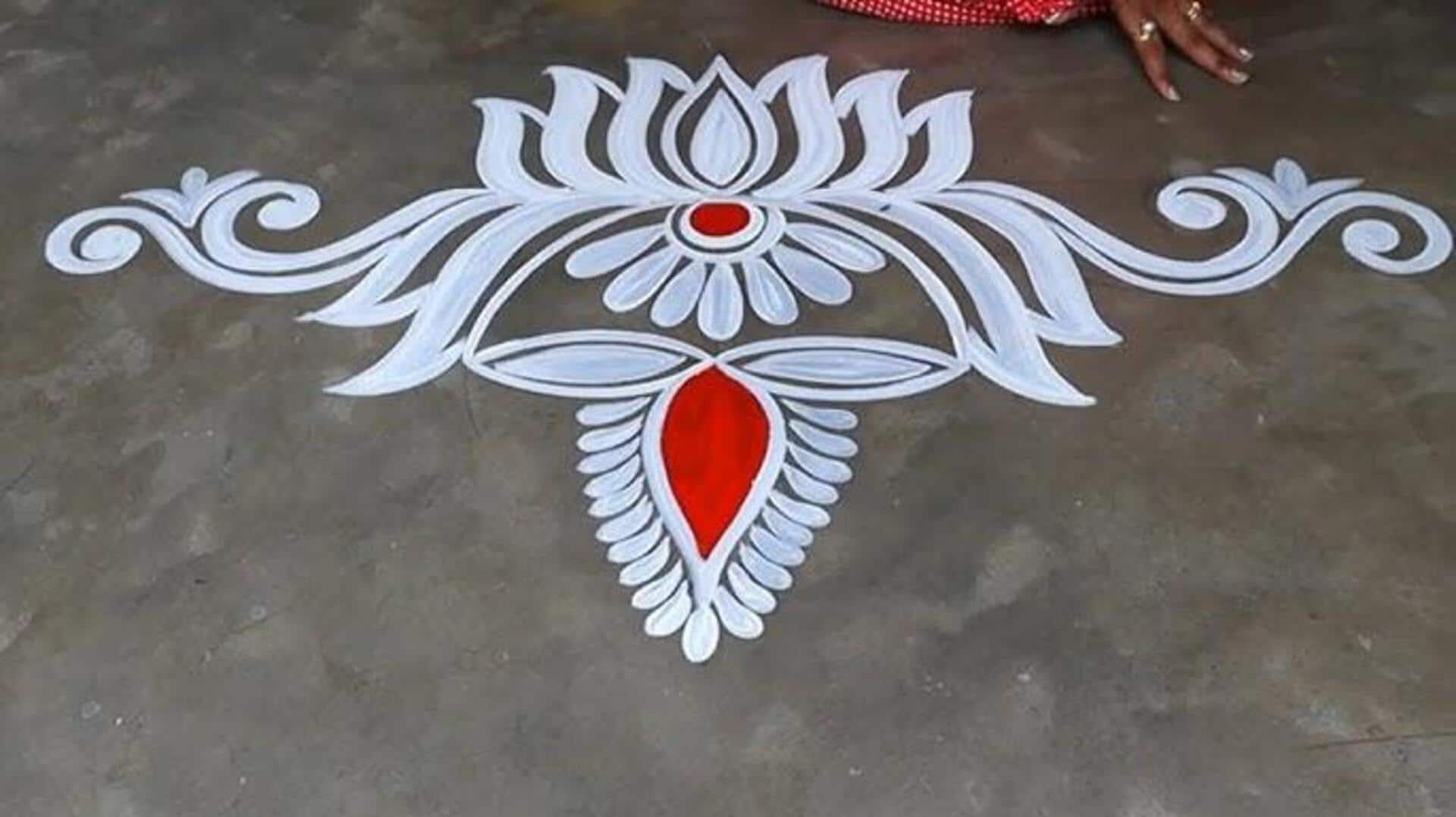
The role of alpona in Bengali wedding traditions
What's the story
Bengali weddings are steeped in tradition and cultural significance, with every ritual having its own unique symbolism. Among all, the art of alpona holds a special place. Alpona is the beautiful, intricate pattern drawn on the floor using rice paste, commonly observed during different ceremonies. The designs are not just ornamental but carry profound cultural meanings, adding to the spiritual decor of the wedding rituals.
#1
Symbolism of alpona designs
Alpona designs are not merely an expression of artistry, they are a mark of prosperity and auspiciousness. Each pattern is meticulously selected to deliver some blessings for the couple's life ahead. Lotus flowers, fish, conch shells are some of the common motifs, each signifying different elements of life such as fertility, abundance, and purity.
#2
Preparation process for alpona
Creating alpona requires skill and patience. Traditionally, rice paste mixed with water is used to create it, which is then applied using fingers or small brushes. The process involves meticulous planning to ensure that each design aligns perfectly with the ceremony's requirements. This preparation is often a communal activity where family members come together to contribute their creativity.
#3
Placement during wedding rituals
The placement of alpona is also strategic in Bengali wedding rituals. It is usually drawn at entrances or around sacred spaces where key ceremonies are held. This positioning serves both aesthetic and symbolic purposes by inviting positive energies into these areas and demarcating the sacred zones within the venue.
Tip 1
Modern adaptations of traditional alpona
In recent times, alpona has taken on adaptations that combine traditional methods with contemporary looks. Most couples prefer colored powders instead of rice paste for a livelier look. They even add personalized touches to the patterns, telling their own stories while still respecting traditions. This evolution is a beautiful blend of heritage and individuality in weddings.